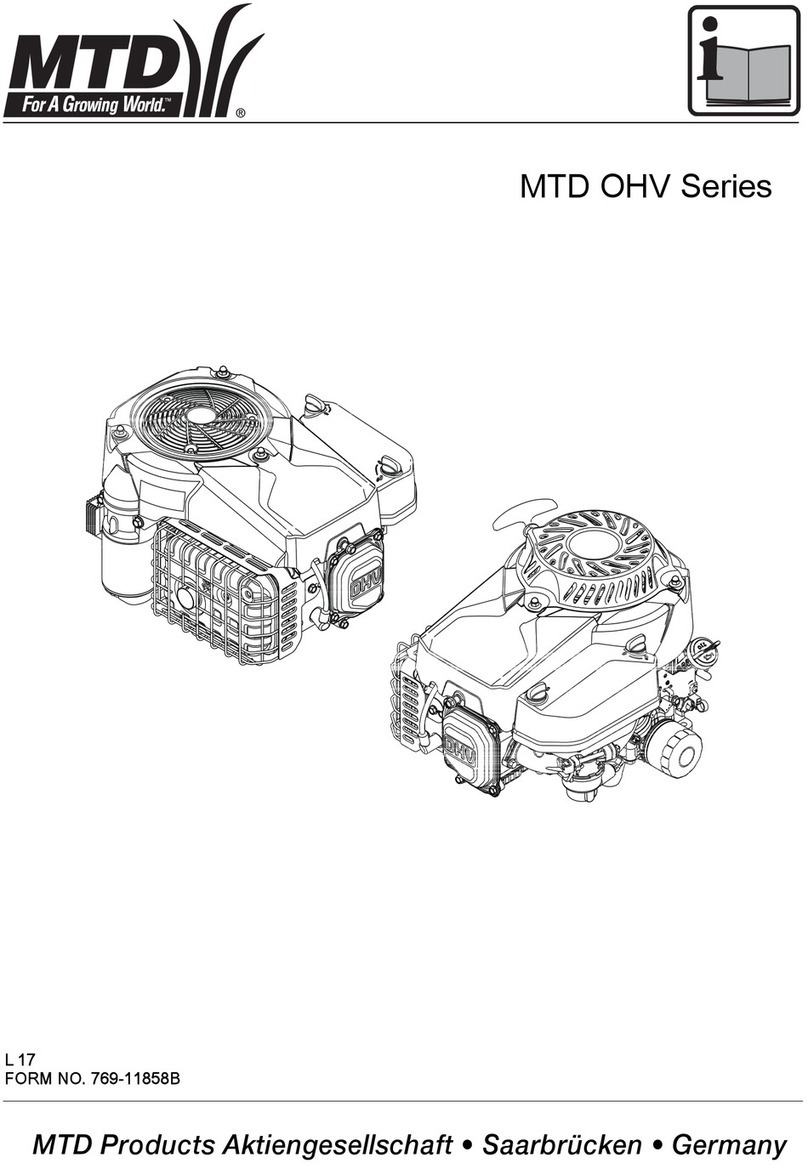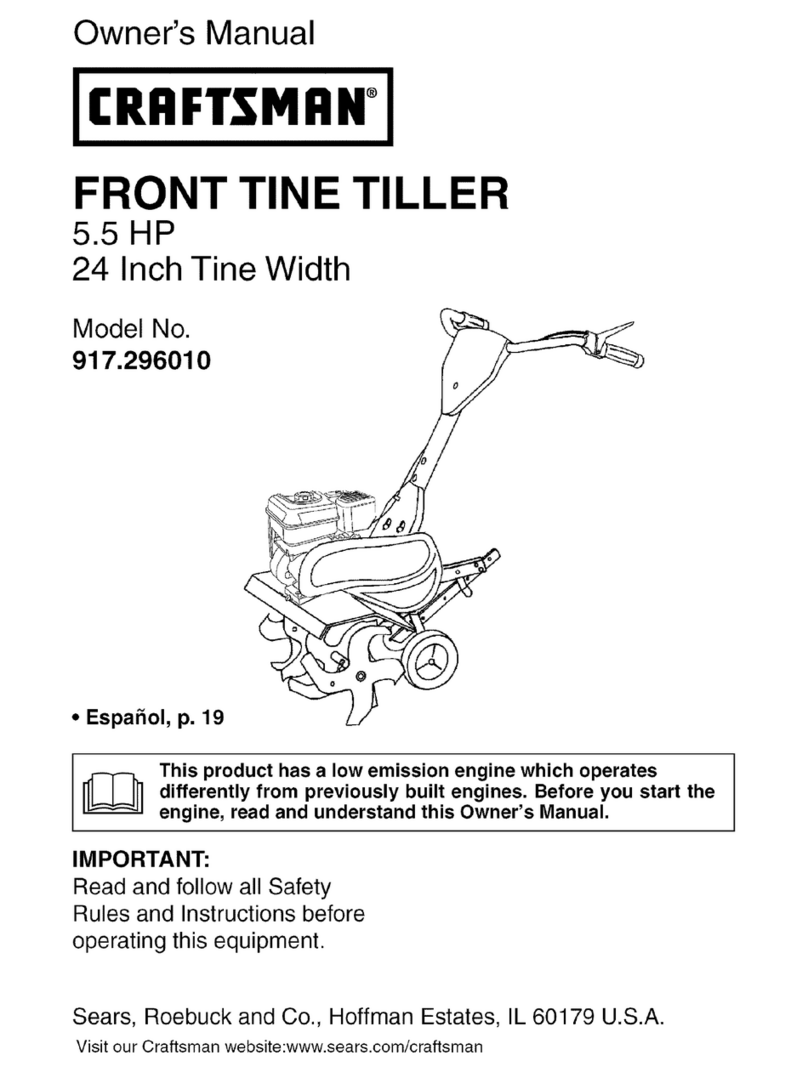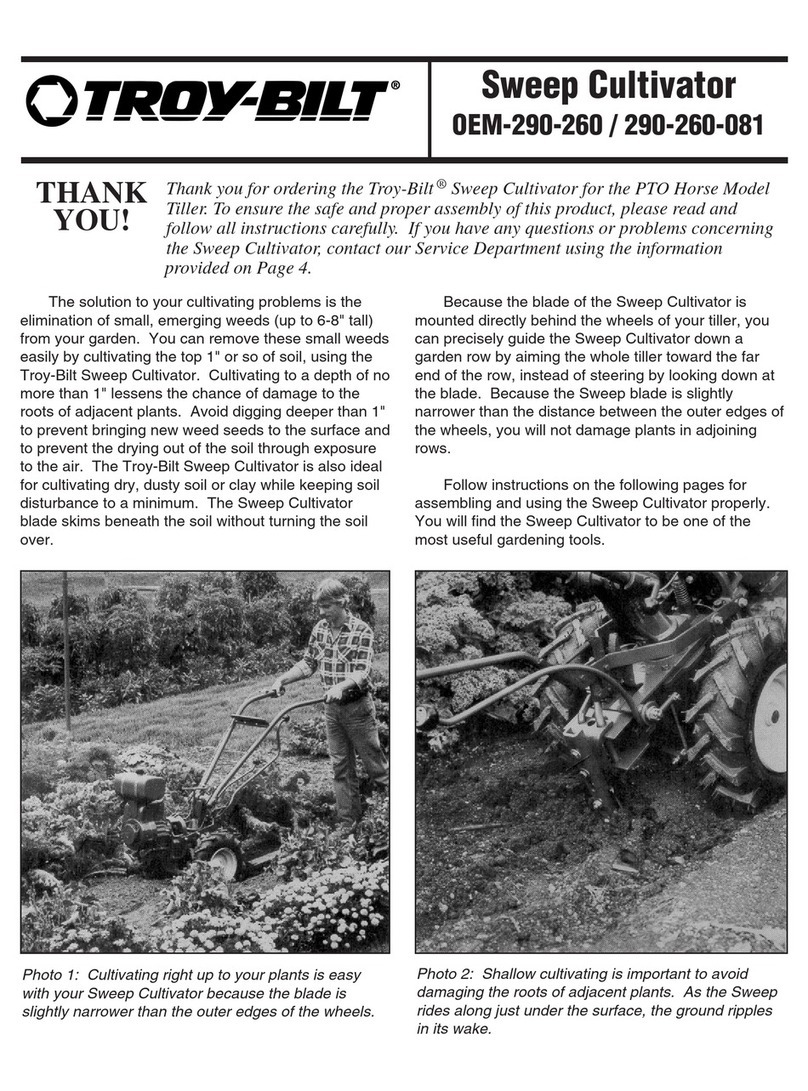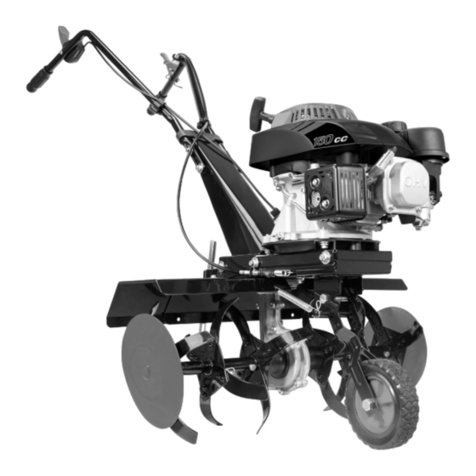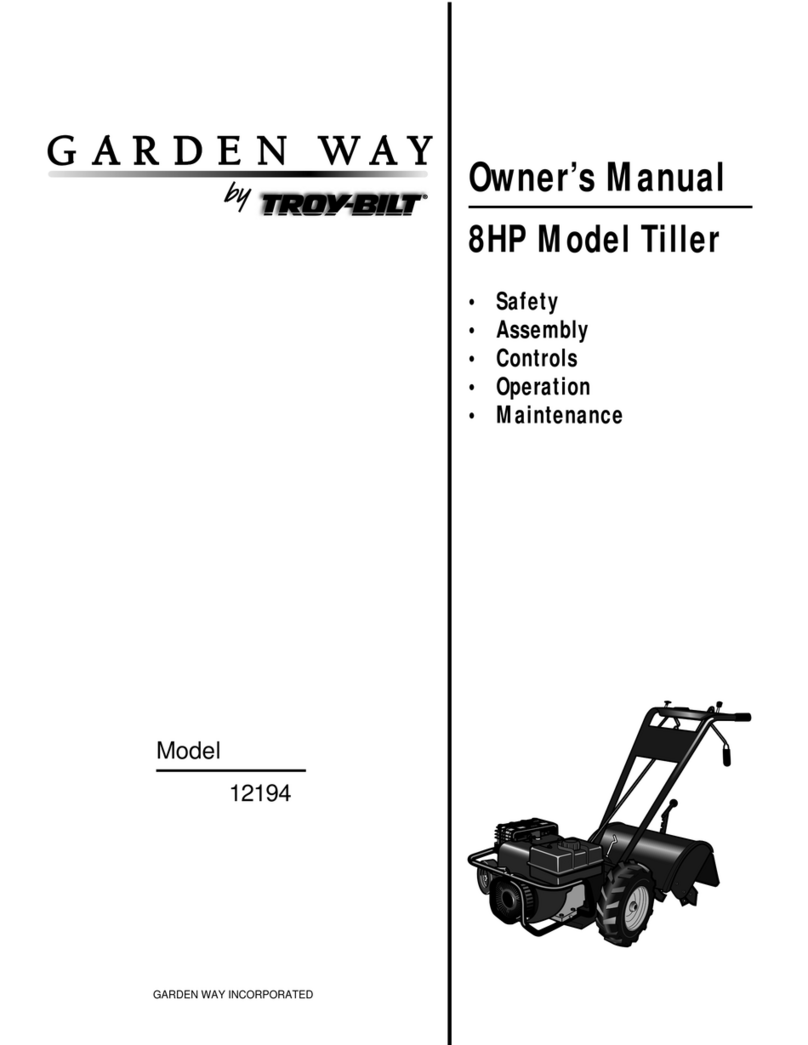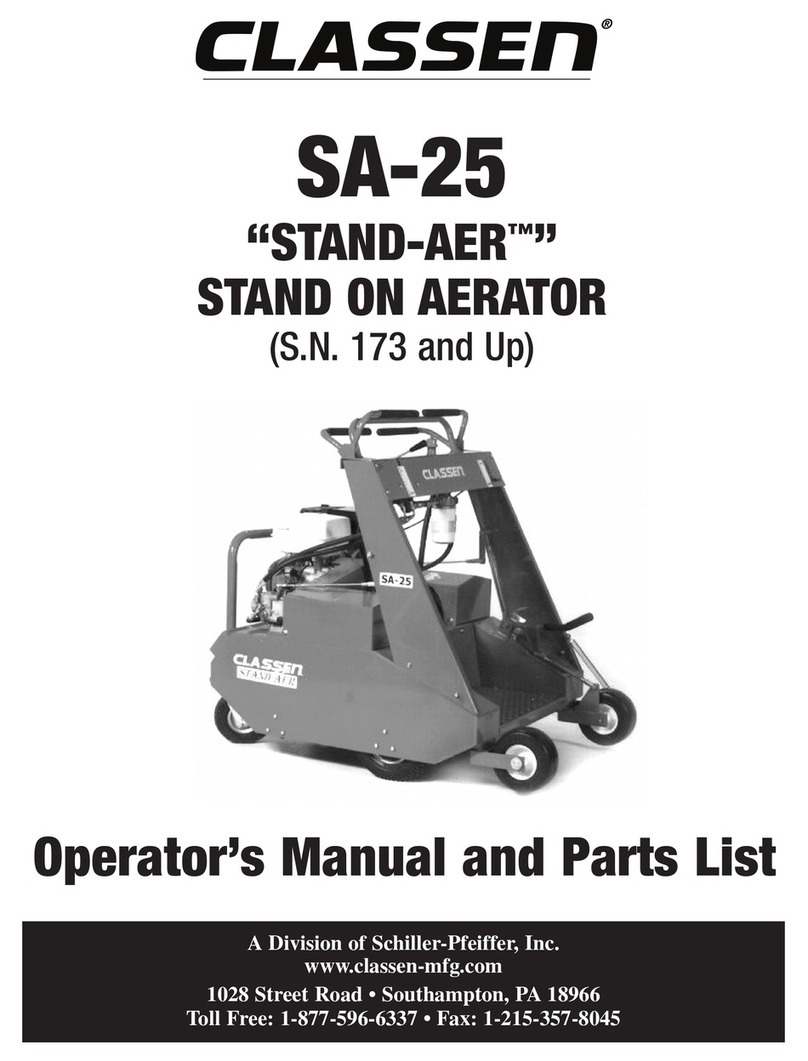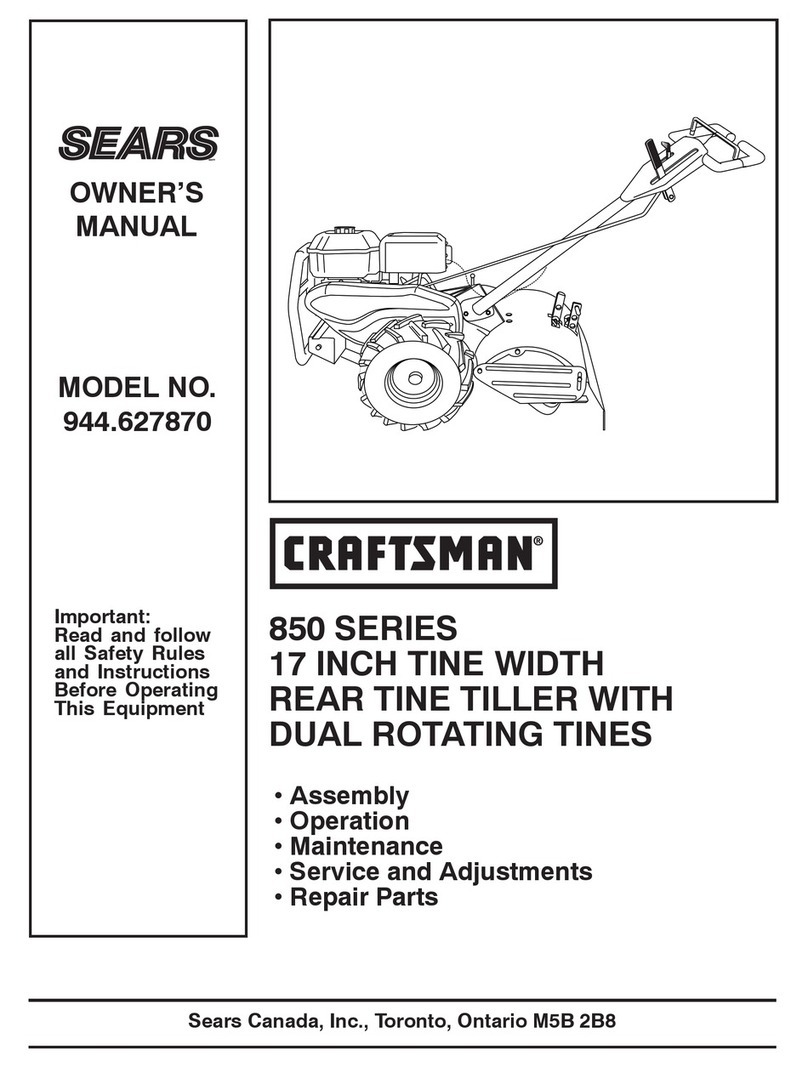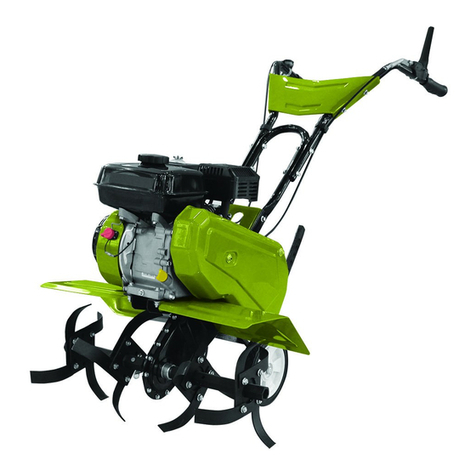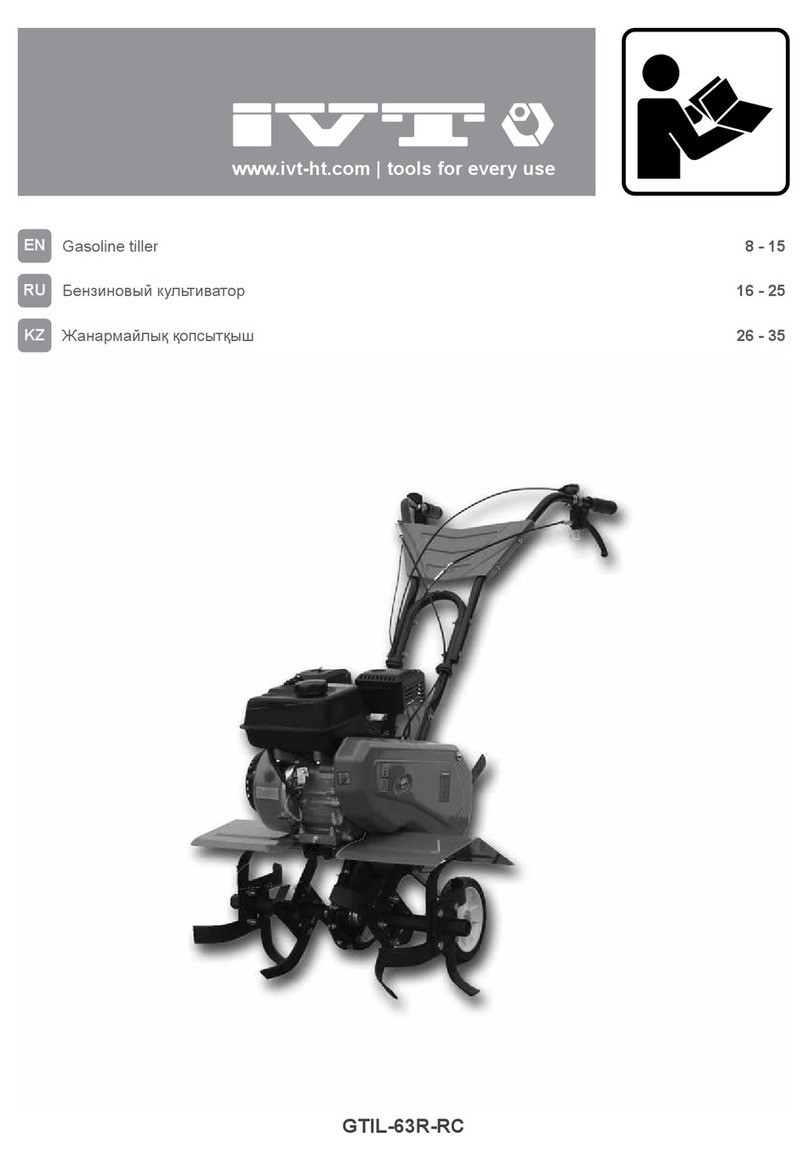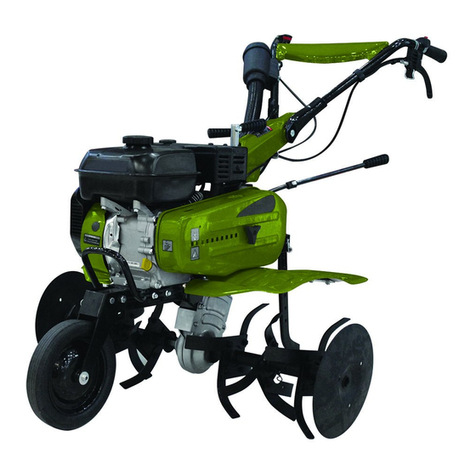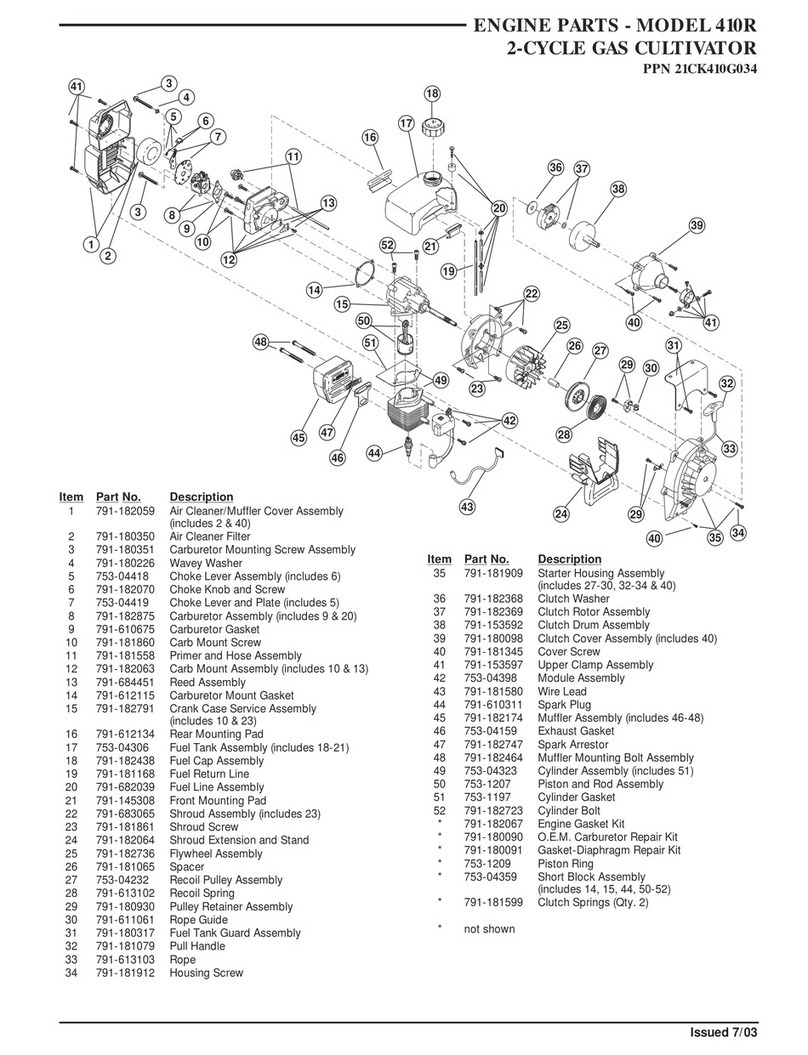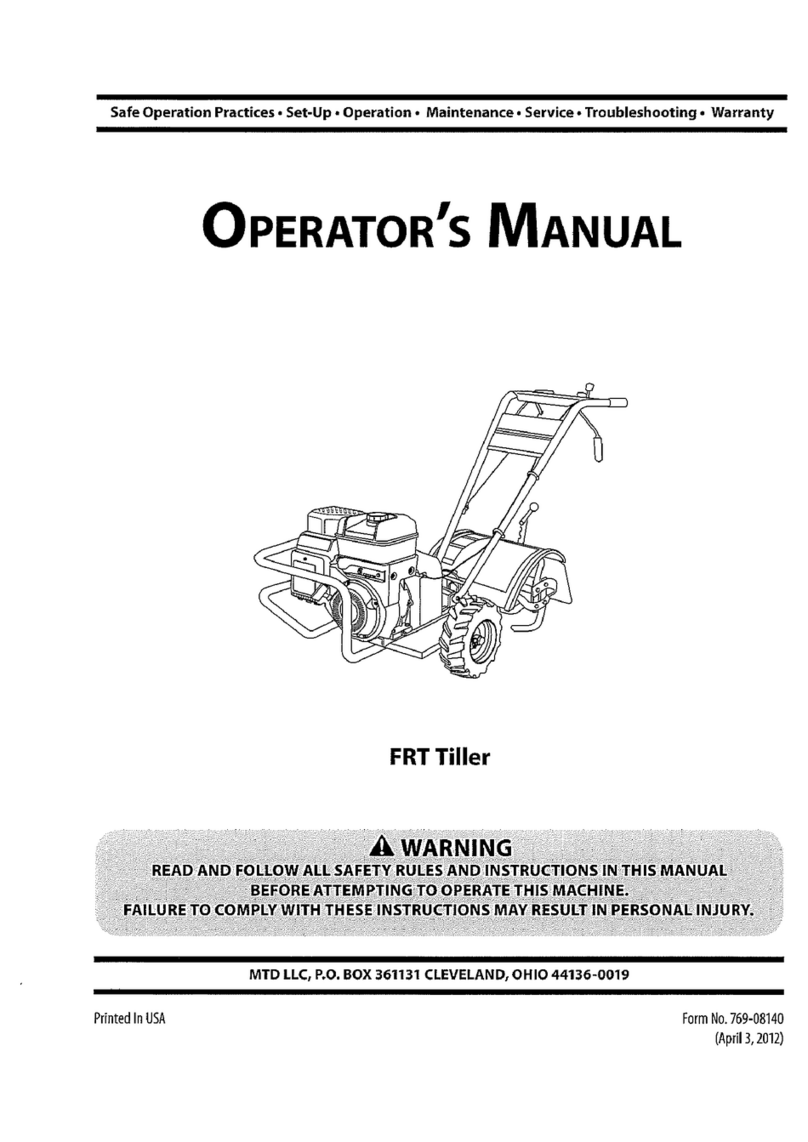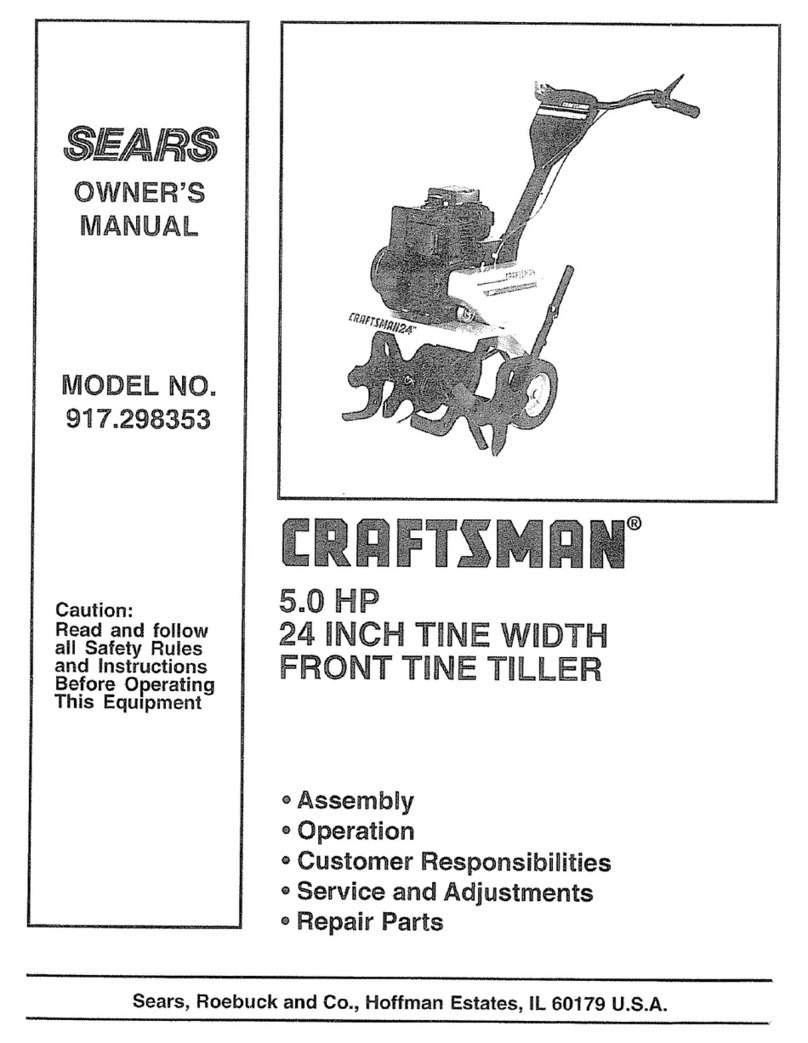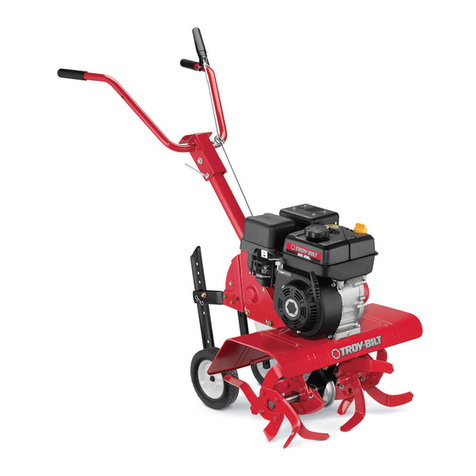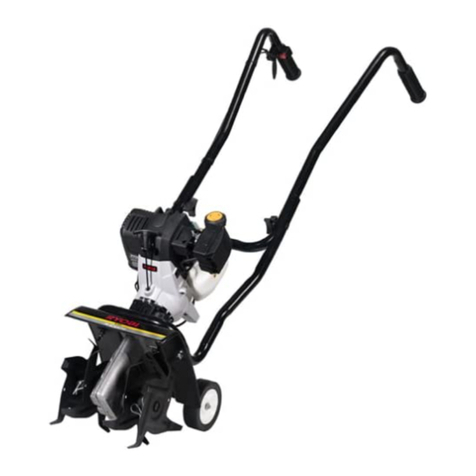
10
EN
Instruction manual
∙Store fuel in containers specically designed for
this purpose.
∙Refuel outdoors only and do not smoke while doing
this operation.
∙Add fuel before starting the engine.
∙Always allow mufer to cool before lling fuel tank.
∙Never remove the cap of the fuel tank or add fuel
while the engine is running or when the engine is still
hot.
∙If petrol is spilled, do not attempt to start the engine,
but move the machine away from the area of spillage
and avoid creating any source of ignition until petrol
fumes have dissipated.
∙Clean up spilled fuel before restarting.
∙Replace all fuel tanks and container caps securely.
∙Do not run the engine indoor or in a conned space:
dangerous carbon monoxide fumes can collect. Exhaust
fumes are dangerous.
WARNING! Exhaust contains
poisonous carbon monoxide, a
colourless and odourless gas.
Breathing exhaust can cause loss of
consciousness and may lead to death.
Provide an adequate ventilation to
keep exhaust gas level as low as
possible.
∙Never store the equipment with fuel in the tank
inside a building where fumes can reach an open ame
or spark.
∙To reduce re hazard, keep the engine, silencer,
battery compartment and petrol storage area free of
vegetative material and excessive grease.
∙The exhaust system gets hot enough to ignite
some materials. Keep ammable materials away from
the device.
∙The mufer becomes very hot during operation and
remains hot for a while after stopping the engine. Be
careful not to touch the mufer while it is hot. Let the
engine cool before storing the machine indoors.
∙Remove adjusting keys or wrenches before starting
the machine.
WARNING! During the use of certain
gasoline tools, some dust containing
chemicals known to cause cancer,
may occur.
Some of these chemicals are: lead from lead based
paints, crystalline silica from bricks and cement and
other masonry products, arsenic and chromium from
chemically treated lumber and other dangerous
products. If dust is present, your risk from these
exposures varies, depending on how often you do this
type of work.
To reduce your exposure to these chemicals, any
time you do pulverulent operations, work in a well
ventilated area and work with approved safety
equipment, such as dust masks that are specially
designed to lter out microscopic particles.
∙If the machine strikes a foreign body, examine the
device for signs of damage and carry out any necessary
repairs before restarting and continuing to work.
∙If the machine starts to vibrate abnormally, switch
off the motor and check for the cause immediately.
Vibration is generally a warning of trouble.
∙Always turn off the machine and wait until the
machine completely stops whenever you leave
the machine, before carrying out maintenance,
before changing accessories, checking, cleaning,
troubleshooting or working on the machine.
∙It is forbidden to move or modify any of the internal
parts of the machine.
Specic safety rules
∙Thoroughly inspect the area where the equipment is
to be used and remove all objects which can be thrown
up by the machine. Do not till above underground water
lines, gas lines, electric cables, or pipes. Do not operate
the tiller in soil with large rocks and foreign objects
which can damage the equipment.
∙Never attempt to make any adjustments while the
engine is running.
∙Keep hands, feet, and clothing away from rotating
parts.
∙Be extremely cautious when operating in reverse
and when pulling the machine towards you. Take extra
care to avoid slipping or falling and to keep feet clear
of tines.
∙Always be sure of your foot on slopes.
∙For wheeled rotary machines, work across the
slopes, never up and down.
∙Exercise extreme caution when changing direction
on slopes.
∙Do not work on excessively steep slopes.
∙Walk, never run with the machine.
∙Start the engine carefully according to manufacture
instructions and with feet well away from the tool.
∙Do not change the engine governor setting or
overspeed the engine.
∙Never pick up or carry a machine while the engine
is running
∙Never operate the tiller without good visibility or
light.
∙Be careful when tilling in hard ground. The tines
may catch in the ground and propel the tiller forward. If
this occurs, let go off the handlebars and do not attempt
to hold back the machine.
